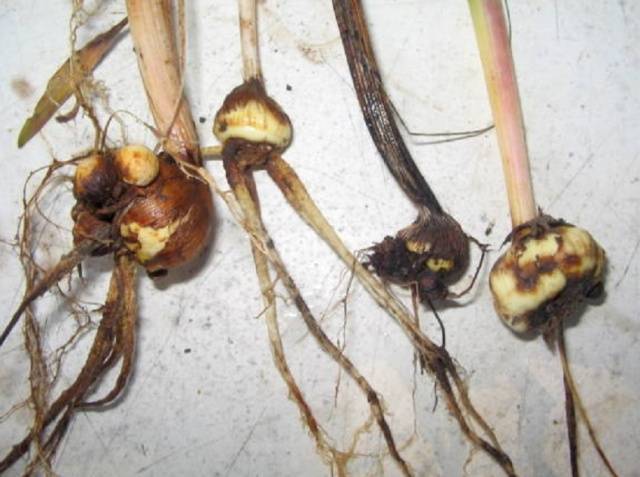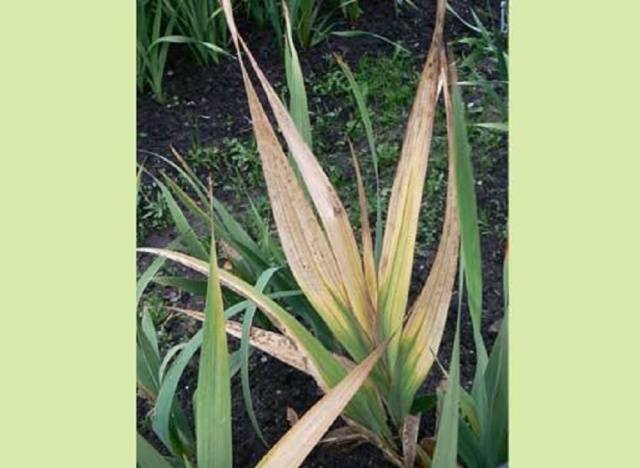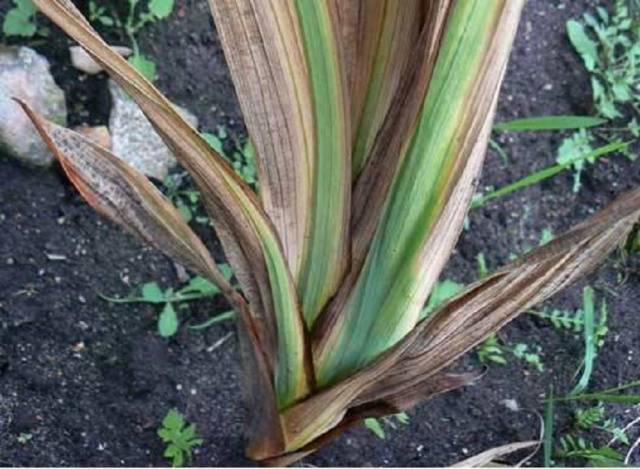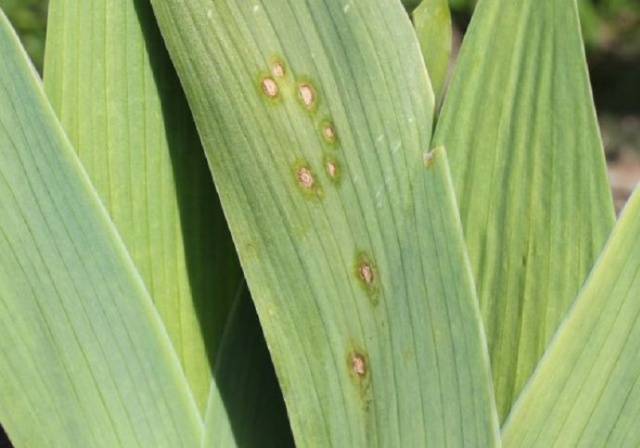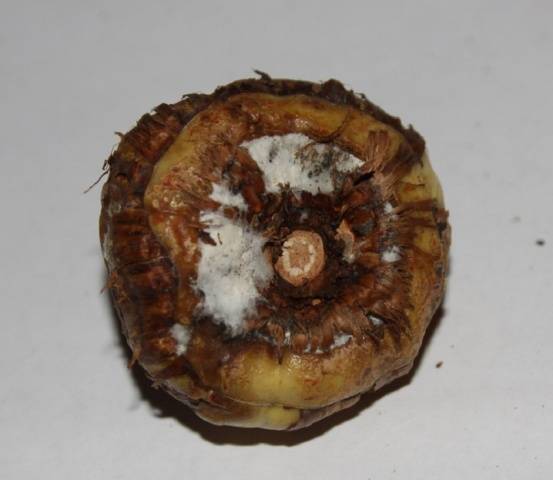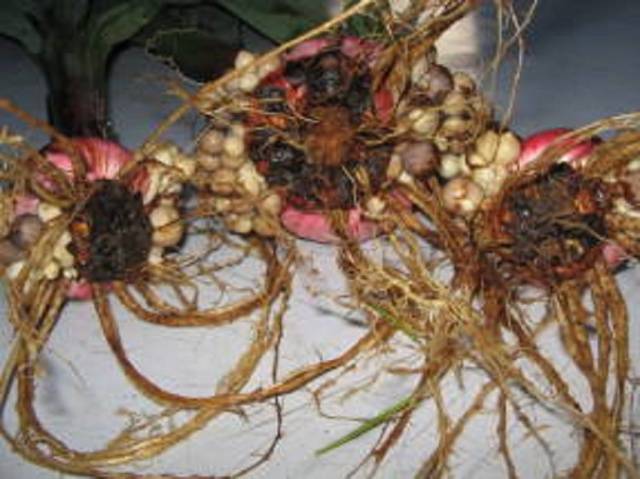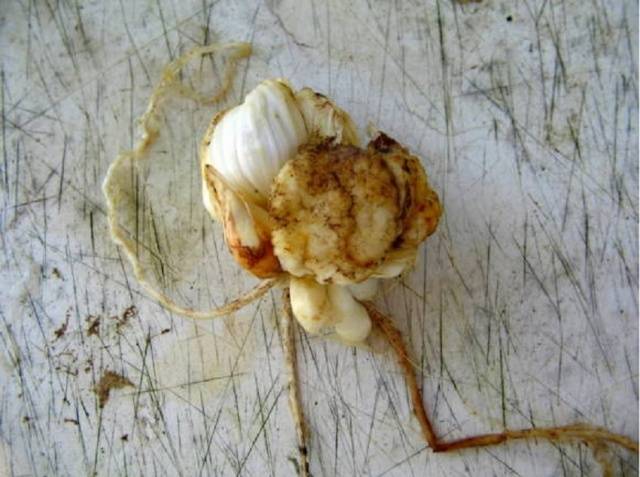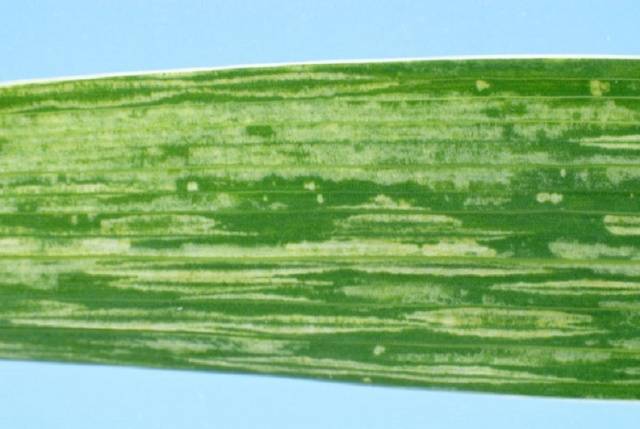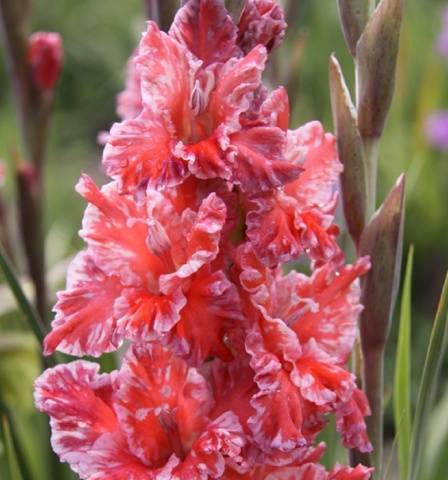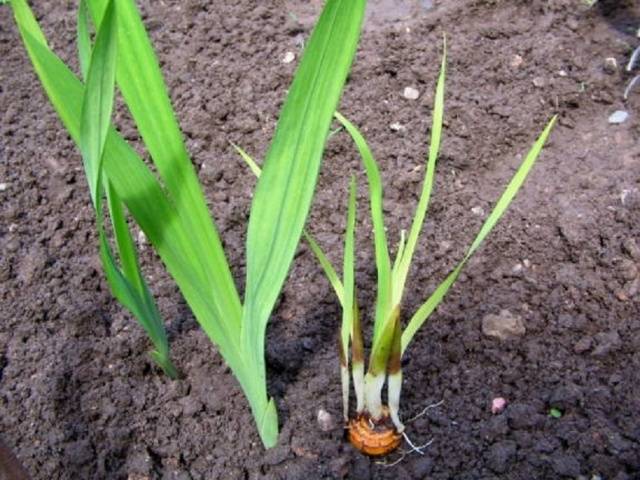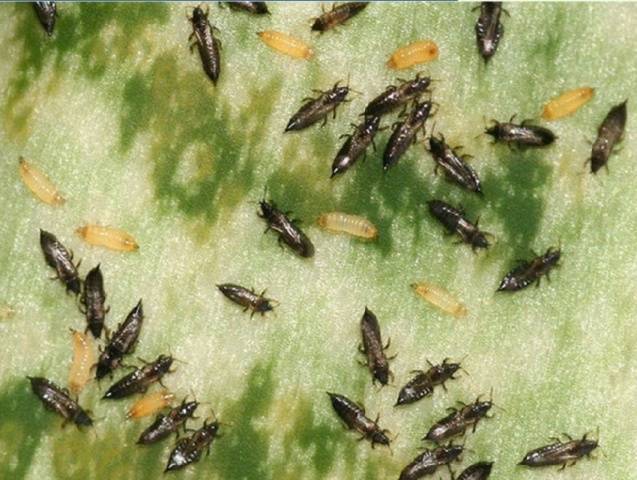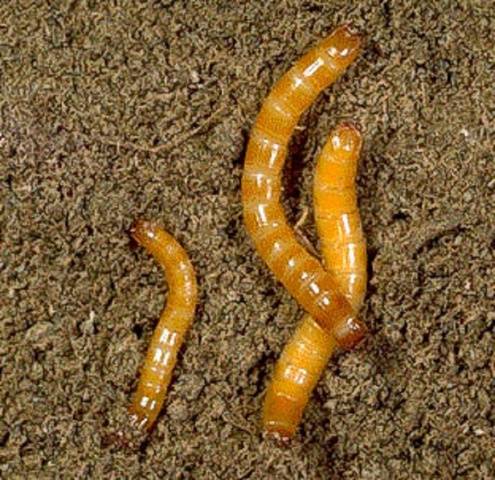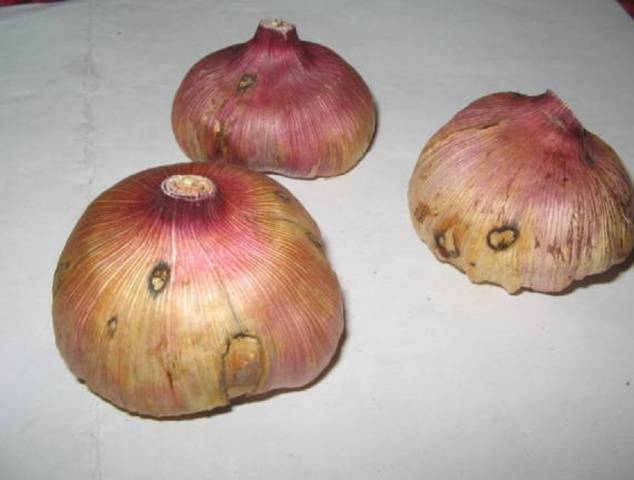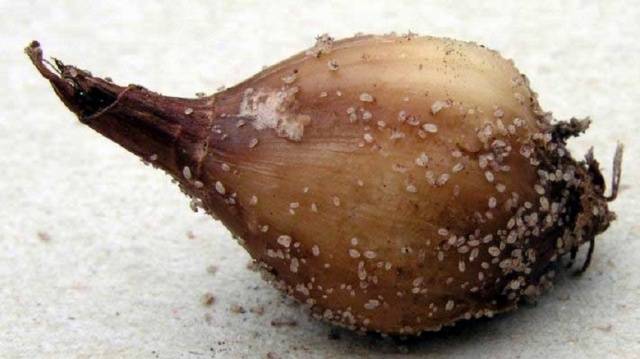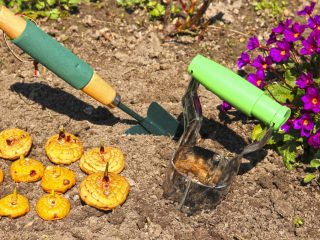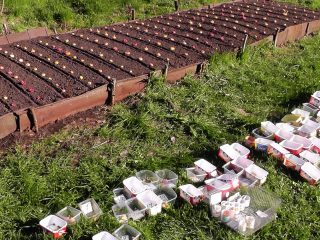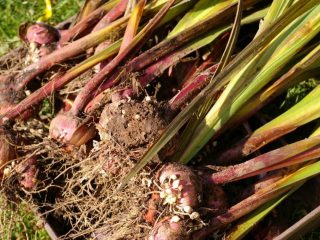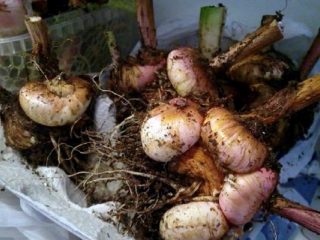Content
Growing gladioli is a fun and rewarding activity. A wide variety of varieties attracts gardeners. Beautiful inflorescences of different shapes and colors can transform a site. But some gardeners, instead of luxurious plants, see small inflorescences and twisted stems in the flowerbed. The main reason lies in the fact that inexperienced lovers pay attention only to caring for flowers. And another important stage when growing a flower is often overlooked - the prevention and treatment of diseases or pest control.
What diseases are found on gladioli?
The main diseases of gladioli that occur on plants are divided into infectious and non-infectious. Infection often occurs by seed or through the soil. Some pathogenic microorganisms are carried by pests that attack gladioli. As a result of the defeat, gladioli stop blooming, severe damage leads to the death of plants. Therefore, planted flowers are regularly inspected in order to take the necessary measures in a timely manner and carry out preventive measures.It is necessary to know the signs of diseases and types of pests that reduce the vitality of gladioli.
Gladioli are susceptible to diseases that affect all bulbous crops. But if these diseases are less dangerous for onions, gladioli tolerate them more severely. This is due to the constant work of breeders to improve varieties. Many modern species cannot be grown without the constant use of special means. Most of the pathogenic microorganisms that cause diseases live in the soil. Therefore, it is quite difficult to fight them.
Pathogens can be divided into groups:
- Viruses. Viral diseases spread in all regions and cannot be completely cured.
- Mushrooms. Fungal infections more often affect gladioli plantings on acidic soils.
- Bacteria.
Plants become infected by spores or through the root system. Some diseases of gladioli develop on weeds, which are often the main carriers. In addition, the causes of gladioli diseases can easily be:
- unfavorable climatic conditions;
- failure to comply with agricultural technology requirements;
- illiterate choice of variety.
Before you start growing and breeding gladioli, stock up on useful information about possible problems. The article will list the main pests, as well as diseases of gladioli and their treatment, photos of each problem.
Fungal diseases
Fungal diseases of gladioli are also called rot.
Among them, the most dangerous and most common is considered fusarium or dry rot.
This disease is caused by the fungus Fusarium oxysporum f.Gladioli. Among modern varieties, gladioli have not yet been bred that are resistant to this insidious disease.
The causes of the disease are considered:
- a combination of waterlogging of the soil and humid warm weather;
- excess nitrogen in the diet;
- planting gladioli on damp, heavy soils;
- strong plant density.
How to determine damage to fusarium?
Externally, the disease manifests itself first by bending and thinning of the leaves, and then by their yellowing and drying out. If you look at the corm, you will notice red-brown depressed spots on it - signs of disease.
The danger of fusarium lies in its widespread distribution. If the corms are weakly affected by the disease, this will not save neighboring healthy plants from infection. It is especially important to inspect the material before storing it in order to protect the remaining gladioli. At the first signs of fusarium blight, diseased corms are removed. If the disease is noticed in the plantings, they are dug up at the same time as the soil around the plant. You can prevent a fungal infection by:
- disinfection of corms in a solution of “Fundazol”;
- dusting the planting material with the same preparation before planting;
- alternating 15-minute heating (55° C) and cooling in cold water.
If infection cannot be avoided, then the soil must be treated with thiazone and sand (1:1). The mixture is applied during autumn or spring digging of the soil.
The next disease of gladioli known to many gardeners is sclerotinia or black dry rot.
Like the previous fungal infection, it has the same reasons for its rapid development. But on acidic and damp soils, damp, cold weather stimulates the spread of the disease.A sign of damage will be the appearance of small dark spots on the leaves. The leaves become weakened at the base, turn yellow, then dry out. There are no pronounced signs of the disease on the corm, but the disease appears during storage. Spots of a yellowish tint appear, which, when enlarged, change color to red-brown, then black. The corm itself becomes hard and rots.
Gladioli of early varieties are more resistant to black dry rot disease. Preventive measures and methods of combating the disease are identical to those described above. If the soil on the site is heavy, it will help:
- adding coarse sand for planting gladioli;
- reducing soil acidity and moisture using known methods;
- harvesting corms before the onset of bad weather.
Another serious disease that requires the attention of gardeners is gray mold or botrytis.
Caused by the fungus Botrytis gladiolorum. It can develop at any period in the life of gladioli and affects all organs of the flower.
The leaves are covered with small brown spots with a red border. They grow, changing the color of the leaves, which die. In damp weather, a fluffy coating is noticeable on the leaves. The stem breaks, then lies down, and the rot penetrates below. The corm dies. Fungal spores are carried by water and wind. Control measures do not differ from other fungal diseases, but you can add treatment of corms with a solution of baking soda before planting (50 g of powder per bucket of water).
Less common diseases are penicillium and solid rot, smut, and curvularia.
Bacterial diseases
Gladioli are most dangerous when grown on alkaline and neutral soils.
The most common disease is recognized scab.
The tops of the leaves turn yellow, and red-brown spots form at the bottom of the plant. Subsequently, they transform into stripes along the leaves. The leaves rot and the stem breaks at the base. Spots also form on the corm. First yellow, then brown. During the storage period, the spread of the disease is not observed. Before planting, the scab is cleaned off and the cut area is treated with brilliant green. Means to combat scab are ineffective. The best technique is to select healthy material and carefully follow the requirements of agricultural technology.
Cancer.
The main spreaders of the disease are nematodes and soil bacteria. A growth forms on the bottom, and premature germination of children may occur. When the disease occurs, the peduncles become less durable, the flowers become small, and the decorative effect of gladioli decreases. To cope with the disease, it is necessary to thoroughly sterilize the soil, destroy diseased gladioli and pre-plant the corms with Fundazol. The disease does not occur too often, but it also poses a danger to nearby cultivated plants.
Viral diseases of garden gladioli
Flowers can be affected by diseases:
- yellow mosaic of beans;
- cucumber mosaic;
- yellow asters;
- tobacco ring spot;
- ring spot of tomatoes.
The list speaks for itself, because these diseases also occur on other plants.
Common Problem – yellow mosaic virus.
An alternation of painted and unpainted areas appears on the flowers, which gives the inflorescences a variegated appearance.The flowers themselves become small, and the inflorescences become elongated. The corms become lumpy or, conversely, become flat and have a bluish tint. Transmission of the disease virus is possible at the time of cutting, by corms or their children.
Cucumber mosaic also leads to the appearance of streaking throughout the plant.
As a result of this disease, gladioli quickly wither and look depressed with deformed peduncles.
When affected by mosaics, the spots may take on the appearance of a closed ring, and the leaves begin to curl. The bulbs are getting smaller. The carriers of these diseases are pests of gladioli (aphids, thrips). To overcome mosaic, it is necessary to fight parasites. Additionally, strict compliance with agrotechnical requirements, removal of all diseased plants, and selection of healthy planting material is required. Complete victory over the disease cannot be achieved using chemical means, so disease prevention will be the main weapon in the fight against mosaic.
Jaundice of asters
It can lead to the appearance of green flowers, thin seedlings resembling cereals, and curling of the inflorescences.
List of main pests of garden gladioli
Thrips – pests not only of gladioli, but also of other plants.
Therefore, the fight against them must be carried out throughout the entire area. This insect feeds on sap, which greatly weakens the plants and reduces their decorative value.
The danger of thrips is increased by its ability to transmit viral diseases. Severely affected flowers do not open; parasite larvae are found inside the bud.
The pest must be controlled by spraying the plantings with insecticides and treating the bulbs. At least three sprayings are carried out per season.
Wireworms.
This is what they call the larva of click beetles. This pest eats the bulb from the inside.
If this defeat does not lead to the death of the gladiolus, then the danger of fungal diseases remains due to the resulting wounds on the tubers. This pest feels good on carrot and potato beds, in places with a large distribution of wheatgrass. Therefore, it is not worth planting gladioli after these crops.
Onion root mite.
In addition to gladioli, lilies, tulips, and hyacinths suffer from this pest. They penetrate through the bottom of the bulb and lay eggs. The larvae feed on the juice of gladiolus corms and weaken the plant. To prevent defeat, you need to:
- Maintain crop rotation. Do not plant gladioli after other bulbous plants.
- Clean the material from old scales before storing.
- Carefully remove plant debris from the site.
- It is necessary to carry out heat treatment and disinfection of tubers.
- Spray with preparations against onion mites.
General preventive measures to protect gladioli from diseases and pests
The main focus at the site has to be on disease prevention. After all, a diseased plant sometimes cannot be cured. And even novice gardeners can prevent this problem. Therefore, simple recommendations for disease prevention will be useful to everyone.
When growing gladioli you need:
- Mandatory adherence to crop rotation. Flowers tolerate one place well for no more than two years in a row.Then they begin to get sick more, and after another year a mass disease of flowers may begin. This occurs due to the proliferation of pathogenic microorganisms that cause diseases - rot and fusarium. Good helpers for soil disinfection are nasturtium, marigolds, calendula and mustard. These plants are planted in the places where gladioli grew. Many gardeners place their plantings around gladioli, which brings the same effect and helps to avoid disease.
- Planting plants in ventilated areas. This helps curb the rapid spread of fungal infections.
- Do not leave a diseased plant next to healthy ones. It is necessary to remove part of the adjacent earthen coma along with the corm.
- Carry out preventive spraying of healthy gladioli. For these purposes, use an infusion of garlic (it is prepared from 100 g of ground garlic and 10 liters of water) and a solution of potassium permanganate (5 g of the product per bucket of water is enough). Potassium permanganate, while disinfecting the soil, enriches it with potassium. This treatment is carried out in early September. Chemical compounds are used only in the initial stage of gladioli disease. They are not intended for treatment, but only to protect healthy flowers growing nearby.
- Mulch gladioli plantings with pine needles to prevent the occurrence of diseases. Sphagnum moss is also good for preventive purposes.
- Periodically spray gladioli against pests and diseases with preventive solutions of copper oxychloride and copper sulfate. 20 g of the substance per bucket of water is enough.
- After harvesting corms for storage remove all plant debris from the site to reduce the possibility of pathogens and pests overwintering.
These simple measures will allow you to preserve your favorite varieties for several years and protect them from diseases and pests.
